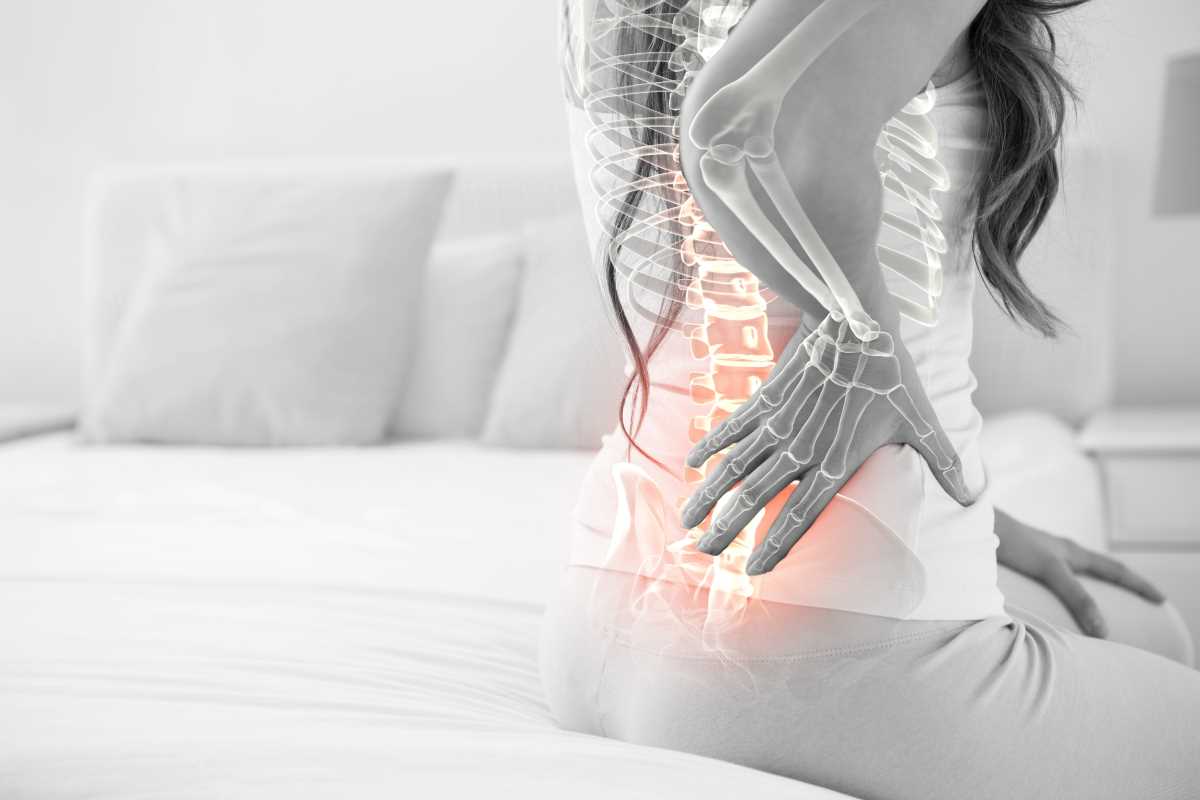Chronic back pain can feel like a relentless obstacle, making even the smallest tasks seem like a challenge. If you’ve been dealing with pain in your back for months or even years, you’re not alone. Millions of people experience chronic back pain, and while it can greatly impact your quality of life, there are effective ways to manage it. The good news is that there’s no one-size-fits-all solution; there are many options available that can help ease the discomfort. From medications to lifestyle tweaks, physical therapy, and more, there’s a path to relief. Here’s an overview of what chronic back pain is, its causes, and the variety of management strategies available.
Chronic back pain is defined as pain that lasts for 12 weeks or longer, even after the original cause has healed or improved. While back pain can occur anywhere, chronic pain typically affects the lower back (lumbar region), as this area supports much of the body’s weight and movement.
Unlike acute pain, which comes on suddenly and usually resolves with treatment, chronic back pain can persist, often cycling between flare-ups and periods of less intense discomfort. This ongoing pain can interfere with everyday activities like walking, sleeping, or even sitting comfortably.
What Causes Chronic Back Pain?
There isn’t always one clear reason why chronic back pain develops, but several factors can contribute to the problem. Common causes include:
- Spinal Conditions: Issues like herniated discs, spinal stenosis (narrowing of the spinal canal), or scoliosis can put pressure on nerves, causing persistent pain.
- Arthritis: Osteoarthritis and other degenerative conditions may affect the joints and tissues in the back, leading to stiffness and discomfort.
- Muscle or Ligament Strain: Repeated heavy lifting or a bad posture over time can strain muscles or ligaments in your back.
- Nerve Problems: Conditions like sciatica occur when a nerve is pinched, causing pain that radiates from the lower back through the leg.
- Lifestyle Factors: Obesity, inactivity, or smoking can put extra strain on the back or slow the healing process.
- Stress and Anxiety: Believe it or not, tension in your mind can translate to tension in your back, and chronic stress may contribute to ongoing pain.
Because chronic back pain can stem from a mix of physical and psychological factors, finding the appropriate treatment often requires a thorough medical evaluation.
Pain Management Options
The good news? There are plenty of ways to manage chronic back pain. What works best for you will depend on the cause of your pain, your lifestyle, and your personal preferences. Your healthcare provider can help you create a plan tailored to your unique situation.
1. Medications
Medications can play an important role in managing chronic back pain, especially if your discomfort is severe. Options include both over-the-counter and prescription drugs.
- Nonsteroidal Anti-Inflammatory Drugs (NSAIDs): Medications like ibuprofen (Advil) or naproxen (Aleve) can reduce inflammation and ease mild to moderate pain.
- Muscle Relaxants: If your pain involves muscle spasms, a muscle relaxant prescribed by your doctor might help.
- Topical Creams or Gels: These products are applied directly to the skin and can provide localized relief.
- Prescription Pain Relievers: For severe pain, your doctor may prescribe opioids or other types of medications. However, these are typically used for short periods due to the risk of dependence.
2. Physical Therapy
Physical therapy is often one of the first lines of defense for managing chronic back pain. A physical therapist will work with you to improve strength, flexibility, and posture, which can help reduce pain over time.
Here’s what a physical therapy plan might include:
- Stretching and Strength Exercises: These target the muscles that support your spine, making your back more resilient.
- Posture Awareness Training: Since poor posture can worsen back pain, therapists teach techniques to improve alignment while sitting or standing.
- Manual Therapy: This hands-on approach can include massage or joint mobilization to reduce soreness.
Sticking with a consistent physical therapy routine can help prevent future flare-ups and improve your overall quality of life.
3. Lifestyle Changes
Sometimes, simple changes in daily habits can make a huge difference for back pain. Small adjustments often build up to long-term relief.
- Improve Posture: Pay attention to your posture when sitting, standing, or lifting heavy objects. Using an ergonomic chair or desk setup can help at work.
- Stay Active: Avoid too much bed rest. Low-impact activities like walking, swimming, or yoga can strengthen your back without adding strain.
- Lose Extra Weight: If you’re carrying excess weight, especially around your midsection, it can increase stress on your lower back.
- Quit Smoking: Smoking can reduce blood flow to the spine, slowing its ability to heal. Quitting can reduce back pain and improve overall health.
4. Alternative Therapies
For those looking for natural or holistic approaches, several alternative therapies can provide relief from chronic back pain. While not every therapy works for everyone, many people find them helpful when combined with other treatments.
- Acupuncture: This traditional Chinese medicine technique uses thin needles inserted into specific points on the body to relieve pain.
- Chiropractic Care: Chiropractors use spinal adjustments to improve alignment and reduce discomfort.
- Massage Therapy: Regular massage can relax tight muscles, improve circulation, and ease stress-related back pain.
- Mindfulness Practices: Techniques like meditation or deep breathing can help manage the emotional toll of chronic pain. Mind-body practices like tai chi are also beneficial.
5. Interventional Procedures
When chronic back pain doesn’t respond to medications or therapy, more intensive options may be considered. These treatments are typically recommended by specialists after a thorough evaluation.
- Steroid Injections: Corticosteroid injections can provide temporary relief by reducing inflammation in specific areas of the spine.
- Nerve Blocks: These injections block pain signals from reaching the brain. They can be helpful for certain nerve-related pain conditions.
- Radiofrequency Ablation (RFA): This technique heats nerve tissue to disrupt signals that cause pain.
- Surgery: While rare, surgery may be needed for conditions like herniated discs or spinal stenosis that haven’t improved with other treatments.
Working with Healthcare Providers
One of the most important steps in managing chronic back pain is working closely with healthcare providers. Everyone’s pain is different, and a “cookie-cutter” approach won’t work. A personalized treatment plan can make all the difference.
Steps to work effectively with your medical team:
- Be honest about your symptoms. Share details about when your pain started, what makes it worse, and how it affects your life.
- Ask questions. Don’t hesitate to ask about treatment options, potential side effects, or what you can expect from a particular therapy.
- Explore a multidisciplinary approach. Combine treatments like physical therapy, medications, and alternatives instead of relying on only one method.
Managing chronic back pain might take time and patience, but with the right support and treatment plan, relief is possible.
 (Image via
(Image via





